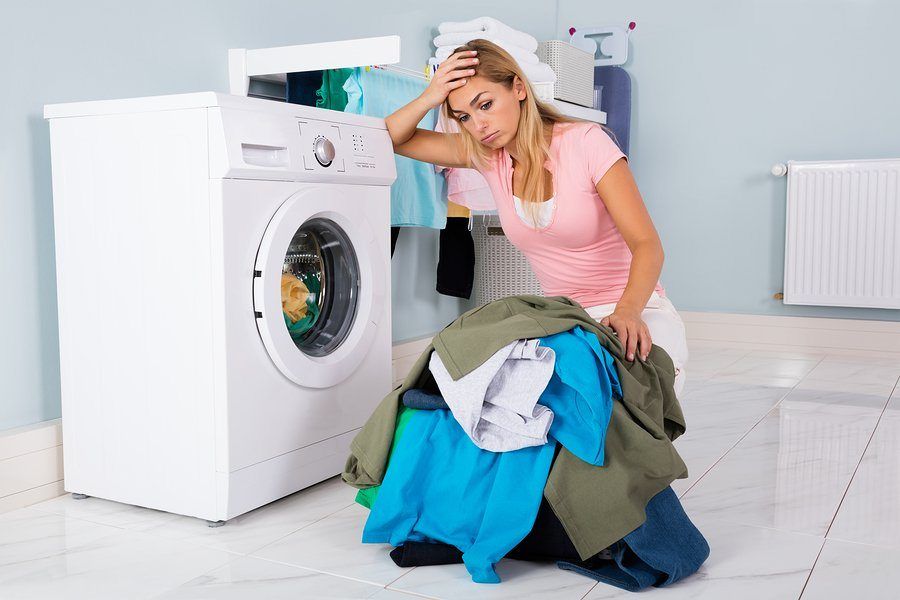Common Washing Machine Problems & How to Fix Them
In this comprehensive guide, we’ll explore the most common washing machine problems, their causes, and step-by-step troubleshooting methods.
Washing machines have become indispensable in modern households, offering convenience, time savings, and cleaner clothes with the touch of a button. But like any appliance, they aren’t immune to breakdowns. A malfunctioning washer can lead to laundry pile-ups, water damage, and costly repairs. Fortunately, understanding common issues and their solutions can help you fix minor problems on your own or know when to call in a professional.
1. Washing Machine Won’t Start
Possible Causes:
- Power supply issues
- Faulty lid or door switch
- Defective control panel or timer
- Tripped circuit breaker
Troubleshooting Steps:
- Ensure the washer is properly plugged into a working outlet.
- Check your home’s circuit breaker or fuse box.
- For top-loading washers, the lid switch must be fully depressed when the lid is closed. If it’s broken, the machine won’t start.
- For front loaders, the door lock mechanism may fail. You can hear a click when the door locks — if not, it may need replacement.
- If there’s no power and you’ve checked everything, a faulty control board or timer could be the issue. Consider contacting a technician.
2. Washer Not Draining
Possible Causes:
- Clogged or kinked drain hose
- Blocked pump filter or pump failure
- Worn drive belt (for belt-driven models)
Troubleshooting Steps:
- Unplug the washer and inspect the drain hose. Remove any clogs and straighten kinks.
- Check the pump filter, typically located behind a small access panel. Clean it out thoroughly — debris like lint, coins, or small socks often get stuck there.
- If the pump motor is making a humming sound but not working, it may need replacement.
- Test the belt if applicable. A worn-out or snapped belt can prevent drainage and spinning.
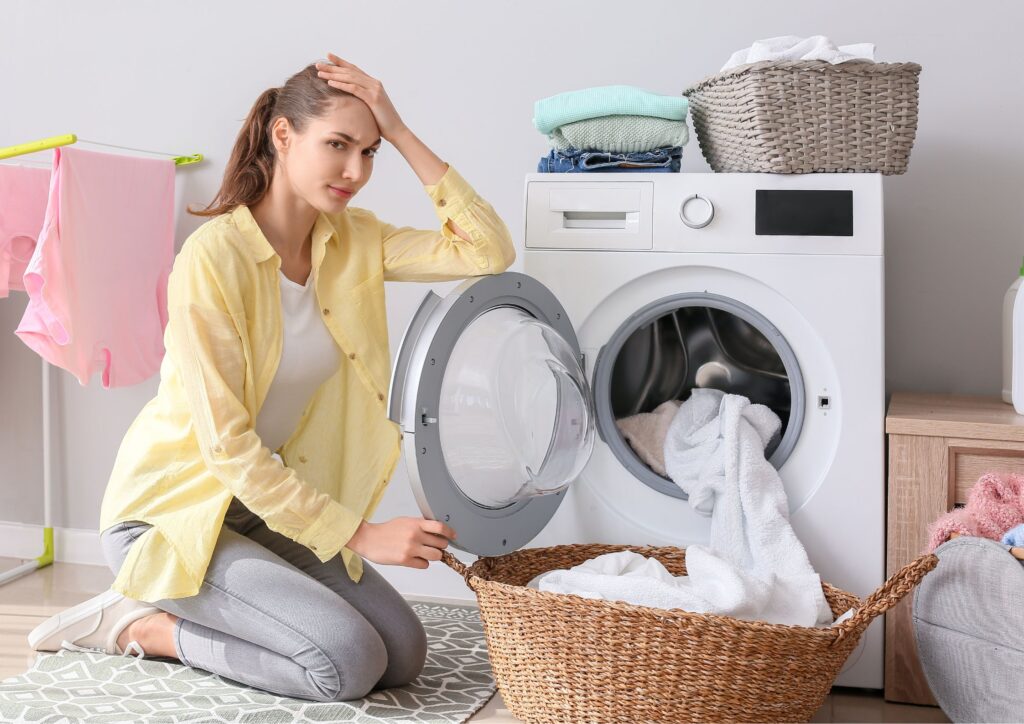
3. Washing Machine is Leaking Water
Possible Causes:
- Loose water supply connections
- Damaged door gasket or seals (front loaders)
- Cracked tub or internal hoses
Troubleshooting Steps:
- Tighten all hose connections at the back of the machine.
- Inspect hoses for signs of wear or bulging — replace if needed.
- For front-loaders, check the rubber door gasket for mold, cracks, or trapped objects. Clean with vinegar and replace if damaged.
- Check for visible cracks in the outer tub — a costly repair that may warrant replacing the unit.
4. Washer is Making Loud Noises or Vibrates Excessively
Possible Causes:
- Unbalanced load
- Washer not level
- Worn bearings or suspension rods
- Foreign objects stuck in the drum
Troubleshooting Steps:
- Pause the cycle and redistribute clothes more evenly in the drum.
- Use a leveling tool to ensure the machine is sitting flat on the floor. Adjust the feet if necessary.
- Check for loose coins or metal objects stuck between the tub and drum.
- If noise persists, the drum bearings or shock absorbers may be worn — this typically requires professional repair.
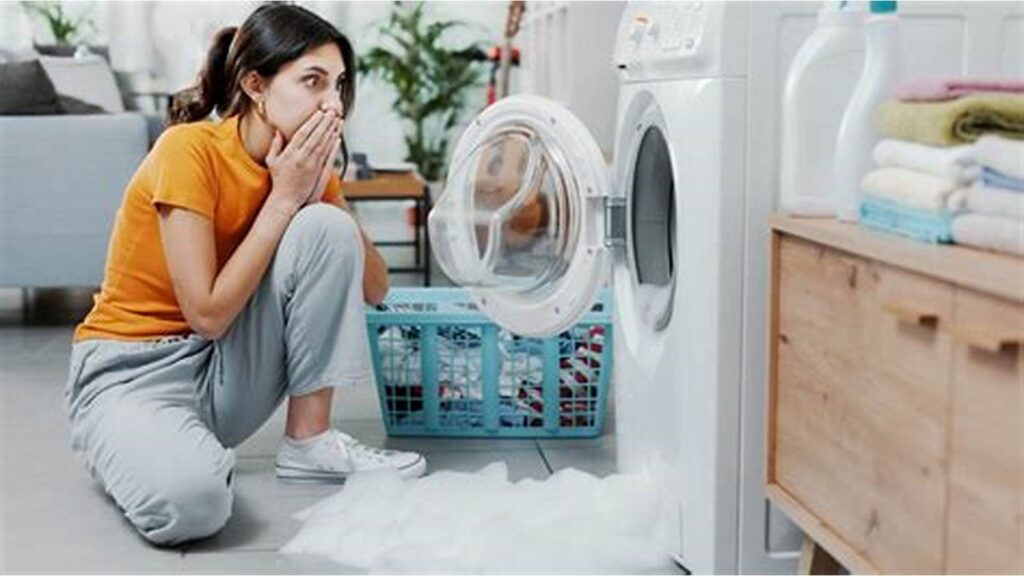
5. Washing Machine Won’t Spin or Agitate
Possible Causes:
- Broken lid switch (top-loaders)
- Faulty drive belt or motor
- Burnt-out clutch assembly
Troubleshooting Steps:
- Confirm the lid switch clicks when the lid is closed. If not, it might be broken.
- Inspect the drive belt for wear or dislodging.
- Run a spin cycle empty and listen — if the motor runs but the drum doesn’t move, a clutch or motor coupling issue could be the cause.
- A control board or timer issue might also interrupt the spin cycle.
6. Musty Odor or Mold Growth
Possible Causes:
- Excess moisture in the drum
- Detergent buildup in the dispenser
- Using cold washes too often
Troubleshooting Steps:
- Run an empty cycle with hot water, white vinegar, and baking soda or use a washing machine cleaner.
- Leave the door and detergent drawer open after each wash to allow for drying.
- Use high-efficiency (HE) detergent if your washer requires it — using regular detergent can cause excess suds and buildup.

7. Washer Overfills or Doesn’t Fill at All
Possible Causes:
- Malfunctioning water level switch or pressure sensor
- Faulty water inlet valve
- Blocked inlet filters
Troubleshooting Steps:
- Inspect the inlet hoses and filters for sediment buildup. Clean them with a brush.
- Use a multimeter to test the water level switch or inlet valve (if you're comfortable with electrical components).
- Ensure hoses aren’t kinked or frozen in colder climates.
8. Washing Machine Door is Stuck Shut
Possible Causes:
- Faulty door lock
- Washer still contains water
- Thermal lock delay after cycle
Troubleshooting Steps:
- Wait a few minutes after the cycle ends — the door may release after cooling.
- If water is still in the drum, drain the washer manually or run a drain-only cycle.
- If stuck, unplug the washer and try the emergency manual release (check your manual).
- A non-functional door lock assembly may require replacement.
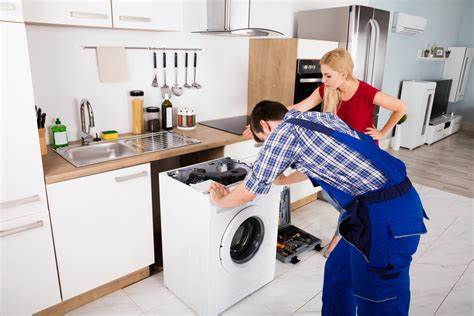
9. Displaying Error Codes
Possible Causes:
- Sensors detecting malfunctions
- Electrical glitches
Troubleshooting Steps:
- Refer to the washer’s user manual for code definitions.
- Common codes (like “F21” or “E1”) usually relate to drainage or water intake issues.
- Try resetting the machine by unplugging it for 5–10 minutes.
- If errors persist, consult a technician for diagnostics.
10. Washer Smells Like Burning or Emits Smoke
⚠️ This is a serious and potentially hazardous issue.
Possible Causes:
- Overheated motor or belt
- Electrical short circuit
- Drum obstruction or foreign object
Troubleshooting Steps:
- Immediately unplug the appliance.
- Do not attempt to restart it.
- Contact a certified repair technician to inspect the motor and wiring system.
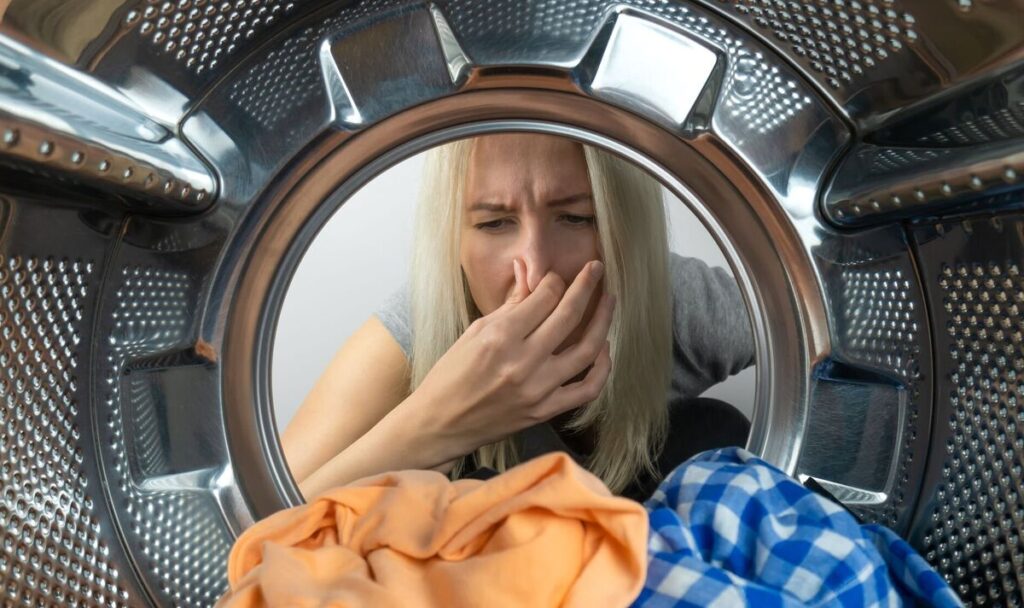
Maintenance Tips to Avoid Future Issues
- Run a monthly cleaning cycle using vinegar or a washer cleaner.
- Keep the door open after use to prevent mold.
- Clean the detergent drawer and filter regularly.
- Avoid overloading the washer — check the manual for load capacity.
- Replace hoses every 3–5 years to prevent leaks or bursts.
Final Thoughts
Washing machines are complex but manageable appliances when you understand how they function. Many common issues can be resolved with a few tools, a little time, and patience. However, don’t hesitate to call a qualified technician if a problem seems beyond your scope. Regular maintenance and early intervention can extend your washer’s lifespan, reduce energy bills, and ensure cleaner laundry every time.
